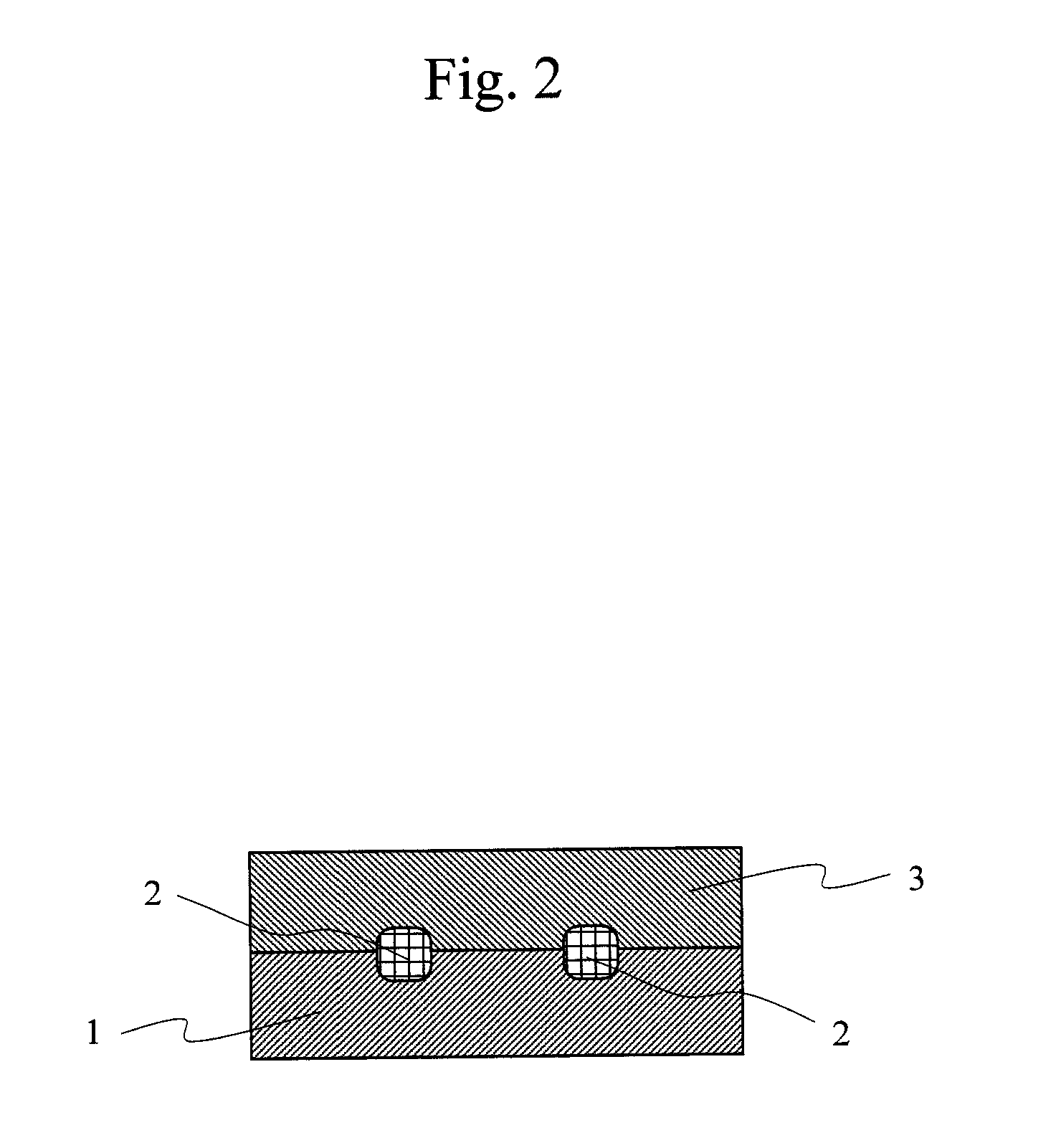Test method using cells and test kit therefor
a test method and cell technology, applied in the field of biological test methods using cells, to achieve the effect of improving quantitative capability
- Summary
- Abstract
- Description
- Claims
- Application Information
AI Technical Summary
Benefits of technology
Problems solved by technology
Method used
Image
Examples
example 1
(Preparation of Substrate for Cell Culture)
(First-Step Reaction)
[0099]39.0 g of toluene and 2.25 g of TSL8350 (produced by GE Toshiba Silicone) were mixed. 450 μl of triethylamine was added to the solution while stirring. After several minutes of stirring of the solution at room temperature, the total volume of the solution was transferred to a glass plate. A 10-cm square glass substrate that had been washed with UV was immersed in the solution and then the substrate was allowed to stand at room temperature for 16 hours. Subsequently, the glass substrate was washed with ethanol and water and then dried by nitrogen blowing. The water contact angle of the substrate surface was approximately 53°.
(Second-Step Reaction)
[0100]25 μl of concentrated sulfuric acid was added dropwise to 50 g of tetraethylene glycol (TEG) while stirring. After several minutes of stirring of the solution, the total volume of the solution was transferred to a glass plate. The above substrate was immersed in the ...
example 2
(First-Step Reaction)
[0104]39.0 g of toluene and 1.20 g of TSL8350 (produced by GE Toshiba Silicone) were mixed. 450 μl of triethylamine was added to the solution while stirring. After several minutes of stirring of the solution at room temperature, the total volume of the solution was transferred to a glass plate. A 10-cm square glass substrate that had been washed with UV was immersed in the solution and then the substrate was allowed to stand at room temperature for 16 hours. Subsequently, the glass substrate was washed with ethanol and water and then dried by nitrogen blowing. The water contact angle of the substrate surface was approximately 51°.
(Second-Step Reaction)
[0105]25 μl of concentrated sulfuric acid was added dropwise to 50 g of tetraethylene glycol (TEG) while stirring. After several minutes of stirring of the solution, the total volume of the solution was transferred to a glass plate. The above substrate was immersed in the solution, followed by 20 minutes of reactio...
example 3
(First-Step Reaction)
[0109]39.0 g of toluene and 0.56 g of TSL8350 (produced by GE Toshiba Silicone) were mixed. 450 μl of triethylamine was added to the solution while stirring. After several minutes of stirring of the solution at room temperature, the total volume of the solution was transferred to a glass plate. A 10-cm square glass substrate that had been washed with UV was immersed in the solution and then the substrate was allowed to stand at room temperature for 16 hours. Subsequently, the glass substrate was washed with ethanol and water and then dried by nitrogen blowing. The water contact angle of the substrate surface was approximately 50°.
(Second-Step Reaction)
[0110]25 μl of concentrated sulfuric acid was added dropwise to 50 g of TEG while stirring. After several minutes of stirring of the solution, the total volume of the solution was transferred to a glass plate. The above substrate was immersed in the solution, followed by 2 hours of reaction at 80° C. After reaction...
PUM
 Login to View More
Login to View More Abstract
Description
Claims
Application Information
 Login to View More
Login to View More - R&D
- Intellectual Property
- Life Sciences
- Materials
- Tech Scout
- Unparalleled Data Quality
- Higher Quality Content
- 60% Fewer Hallucinations
Browse by: Latest US Patents, China's latest patents, Technical Efficacy Thesaurus, Application Domain, Technology Topic, Popular Technical Reports.
© 2025 PatSnap. All rights reserved.Legal|Privacy policy|Modern Slavery Act Transparency Statement|Sitemap|About US| Contact US: help@patsnap.com



